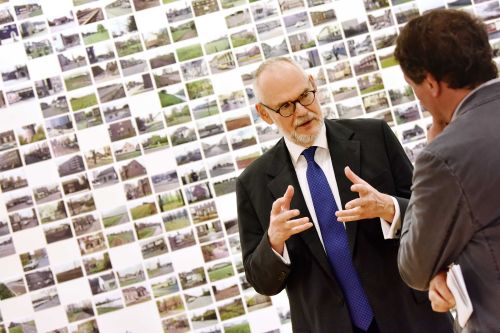SOEP Study
Das Ruhrgebiet gibt es gar nicht: Menschen erzählen die Geschichte des Wandels zwischen Ruhr und Emscher

Photo: Frank Vinken | dwb
The subproject that prioritizes the evaluation of the individuals residing in the Ruhr area stands out for its methodological approach, integrating the benefits of a representative sample with those of personal conversations (qualitative interviews). This combination is rarely practiced worldwide.
The starting point of this project segment is the SOEP longitudinal study, which has been ongoing since 1984, where individuals in Germany (since 1990 also in East Germany) are interviewed once a year, as long as the same individuals are willing to participate. It began with approximately 12,000 adults, of whom about 1,000 are still willing to be interviewed after over 30 years. Over time, the sample is periodically replenished with new participants. Additionally, the sample size has been expanded to approximately 30,000 adults presently. From this pool of individuals representative for the Federal Republic of Germany, those were selected who, in 2015, resided near the locations in the Ruhr area that were selected in a photographic study in 1972. Proximity was crucial to allow discussions beyond the ongoing SOEP questionnaire survey, focusing on the changes at these photo locations. Thus, discussions were conducted with 41 SOEP respondents.
The conversational partner was Gert G. Wagner, the longstanding head of SOEP and current board member of DIW Berlin. He reports on this in the final volume of the subproject funded by the Mercator Foundation.
He summarizes his initial findings as follows: Not a single interviewee spoke fondly of the “good old days.” At most the first generation “guest workers” and their children, who were well received in intact factory settlements. They too, spoke of challenging working conditions though.
The people born before the time of the major upheaval in the Ruhr area (before 1976) who stayed in the Ruhr area (or returned or moved there) have not merely adjusted to the transformation but are seizing the opportunities the region provides. From recreational activities to the extremely diverse culture. Both areas have expanded because there is simply more space, less pollution, and various subsidies.
The Ruhr area has remained or become home for these people – not least because they don’t see themselves as residents of the Ruhr metropolis but as citizens of their city or – very often – their familiar neighborhood.
Gert Wagner ist preparing a book publication.